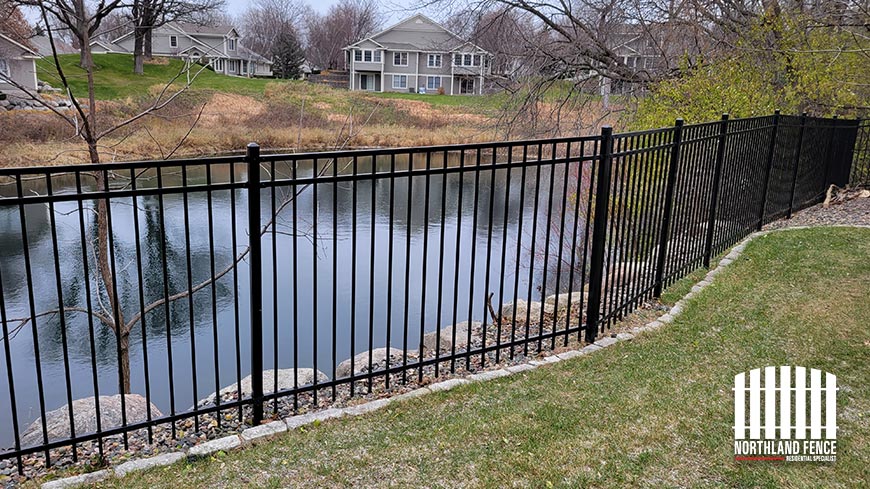When looking for a fence to match your yard and provide you with the privacy and protection you need, it can be difficult to navigate all the different product options. From vinyl, to wood, to iron, each one is unique and has their own advantages and disadvantages.
One of the most encountered struggles is knowing the difference between wrought iron and cast iron fencing. While they are both made from the same metal, they are not the same material. Each one has its own properties and considerations that need to be made.
Keep on reading for the breakdown of each fencing material. Every question you have about wrought iron versus cast iron can be answered by Northland Fence!
Material Differences Between Cast Iron And Wrought Iron
While cast iron and wrought iron are both made from the same metal (iron), they are not necessarily the same material because of the different processes they undergo in order to be made.
Cast iron and wrought iron both start as iron and are melted down as such, but that’s where the similarities end. Both the added substances and the process of creating the irons are different and affect them as materials. It changes their attributes such as durability, strength, cost, and more.
What Is Cast Iron?
Cast iron is an iron alloy that is made through a casting process, hence the name. Between 2%-4% of iron ore is melted down and then mixed with other elements like manganese and silicon before being casted.
The casting process is relatively simple and follows its namesake to a tee. After the iron ore is smelted and mixed with the other elements, the solution is poured into a mold, or cast, and left to cool and harden.
Cast iron has a high carbon content in it that affects its overall properties and casting process. When it is cooled, cast iron is a heterogeneous alloy, meaning it has many different elements in many different phases. All these different elements and their phase differences lend themselves to the properties that you see in the end cast iron product.
What Is Wrought Iron?
Wrought iron is almost the complete opposite of cast iron in terms of materials. Instead of having minimal iron ore smelted, wrought iron is almost all pure iron with about 1%-2% of added slag.
Slag is a byproduct of the smelting process specifically with iron, usually it contains a mix of silicon, aluminum oxides, sulfur, and phosphorus. The combination of iron and minimal slag is what lends wrought iron to its softer nature.
The process to create wrought iron is again, almost the complete opposite to that of cast iron. Instead of pouring the hot metal into a mold and waiting for it to harden, more arm work is put into the molding of wrought iron. The hot metal is worked with a hammer to be molded into its final form before cooling.
Wrought iron gets stronger the more time it’s worked. Because of its highly malleable nature it can continue to be reheated as needed to be worked and formed into the proper final product.
Fence Durability
One of the main components to understand when looking into any fence, but especially the differences between cast iron and wrought iron fencing is the durability of the material. Not all metal is made the same, and some are more durable than others.
Durability is essential to fencing, especially in Minnesota weather conditions. Even with the great prices that Northland Fence can offer, you simply don’t want to be consistently buying new materials to update your fence because it broke. You should be able to trust your fence to stand up to anything, and that ability is all within the materials.
The good news is that iron is one of the most durable materials on the fencing market so wrought iron and cast iron are both great options. But let’s get into the details of each as they are not the same materials.
Cast Iron Fence Durability
Cast iron is known as being an incredibly durable material. It is very popular among kitchen utensils such as a cast iron skillet. These are meant to last throughout your career and the same properties are applied to fencing material.
However, while cast iron is meant to last a lifetime, it is more subject to rusting than other metals. This can be a difficult decision in the harsh Minnesota winters where moisture is in abundance and can seep into the fencing material.
Wrought Iron Fence Durability
When it comes to durability, a wrought iron fence is hard to beat. Since it is mostly iron with a bit of steel and other slag materials, it is built to last. Especially when coated properly (such as galvanization or a quality powder coating), it’s possible that wrought iron fences outlast even you!
If you don’t believe us, just take a look at many historical sites throughout the world. Many of these are built within wrought iron fences that were built back in the late 1800s and early 1900s. They are still standing strong today and protecting their sites from unwanted visitors.
Pros And Cons About Cast Iron
While durability and material is an important part of the differences between wrought iron and cast iron, there are many other advantages and disadvantages to both types of iron. It’s important to analyze them individually as well to fully understand these differences.
Advantages
Cast iron is a strong material, but what really makes this an advantage is the reduced cost that it comes at given its relative strength. This is a stiffer material and, thanks to its low melting point and greater fluidity, the process of making it is easier and thus reduces the cost.
The process of making cast iron is one of its biggest advantages in the metal industry. Since cast iron is easy to cast, it can be made into almost any shape or size that the consumer needs easily. This also means that cast iron is easy to mass produce and therefore lower the price point of the material.
Cast iron products are great for machinability and reducing the overall continuing cost of the product. Because this material is so durable and requires little to no maintenance, it eliminates the need for replacement costs and parts.
Plus cast iron can be used in a multitude of industries because of its machinability and flexibility to comply with the current systems in place and many different needs of numerous products.
Disadvantages
There are two main disadvantages when it comes to using cast iron material. The first is the weight of the cast iron. Since it tends to be on the heavier side, it can be found to succumb to gravity and begin to sink into the ground overtime if not installed properly.
The second disadvantage is the cast iron’s tendency to rust over time. While it is made to stand the test of time and possibly even outlast your own lifetime, cast iron without the proper coating is susceptible to rusting within a fairly quick timeline compared to other metals.
Pros And Cons of Wrought Iron
Wrought iron may seem very similar to cast iron in terms of durability and material. However, it has its own unique properties that give way to its own unique advantages and disadvantages. These pros and cons can be particular to using wrought iron as a fencing material, but generally also can be generalized to using wrought iron as material for any construction.
Advantages
Along with the durability and low maintenance of wrought iron fencing, there are plenty of other advantages to choosing this material. Wrought iron is a strong material. It can provide you with the protection you need and is unlikely to be torn down, cut through, or broken because of its grounded installation.
It also is very customizable, at least during the creation process. Since wrought iron is hammered out by hand and not simply poured into a pre-made mold, the blacksmiths are able to take requests on the shapes and final product specifications that consumers may have. This allows you to not only ensure aesthetic pleasure, but really capture the unique personality of your yard and home.
Disadvantages
However, with every advantage comes a disadvantage to consider. The biggest disadvantage to wrought iron fencing is the high price point. Since this is relatively handmade and customized as a material, it is not easily mass produced. Therefore, the price point reflects the hard work put into the product and is a bit higher than other material options.
The second disadvantage of wrought iron to consider is the labor intensive installation process. Wrought iron is installed into the ground and therefore is unlike the typical cement installation process that other materials and companies may offer. This intense installation process can continue to drive up the price point, however it may be worth it for the durability, aesthetic, and low maintenance that wrought iron fencing gives to you.
Northland Fence, a leader in the Minnesota fencing industry, has staff with the expertise to help answer all your questions on cast iron vs. wrought iron fencing. We are honest with all our customers and one of the most reliable fencing companies in the state, proven by our hundreds of 5-star reviews. Call us today at (763) 316-4881!


